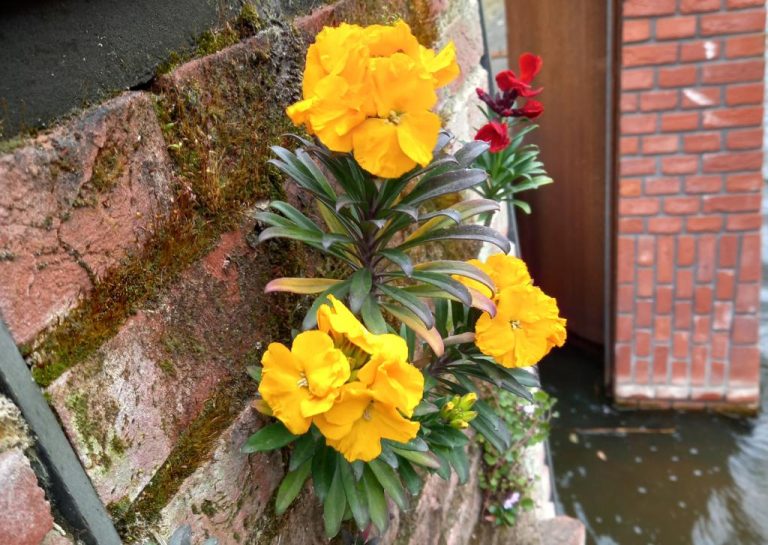Architecture offers room for wild wallflowers

The new quay walls of the Nieuwe Mark in Breda have blossomed. (Photo: Koen Mulder)
Traditional brick quay walls – as in the inner city of Delft – are enormously thick, porous brick walls that are in direct contact with the ground and the groundwater. As a result, the wall surface of the quay remains damp for a long time, providing an urban biotope for unusual rock plant species such as ferns or flowers that can grow on walls.
Modern quay walls are often little more than a decorative layer on the exterior of a steel sheet piling that dries out completely in the summer and thus harbours no greenery.
Researcher Koen Mulder (Faculty of Architecture and the Built Environment) is working on a green alternative: a brick quay wall with plant-friendly mortar placed in front of a water-transporting layer. This set-up has already been used in Breda. In Delft, the researchers want to take the technology a step further on the Graaf Floriskade and stack the bricks instead of mortaring them. This creates even more room for greening.
Read: New techniques for greening quay walls
Do you have a question or comment about this article?
j.w.wassink@tudelft.nl

Comments are closed.